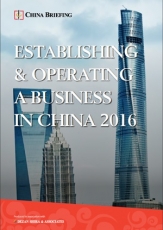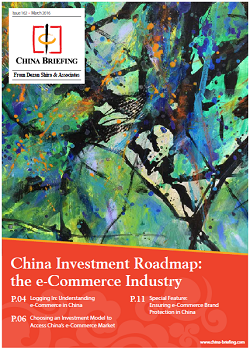China Market Watch: Holiday Outbound Tourism Surge and the Steel Sector’s Restored Growth
China tourism revenue surges over Lunar New Year holiday
This year’s Lunar New Year holiday period saw a total of RMB 423.3 billion spent on tourism, a 15.9 percent increase on last year according to the National Tourism Administration. Outbound tourism increased, with around 6.15 million overseas trips by Chinese nationals, up seven percent. Travel website Ctrip recorded over RMB 100 billion on outbound tourism. Tuniu.com, an online travel agency also reported a similar boom, generating around 48 percent of its holiday business from outbound tourism, with Southeast Asian countries proving the most popular destinations. This trend is fueled by greater numbers of residents from rural cities looking to holiday abroad.
China’s property market slowdown in 2017
China’s real estate market is expected to grow at a slower pace in 2017 after tightened regulations were implemented to alleviate the overheated market. 2016 saw resilient growth, with the market reaching RMB 9.9 trillion and growth of 36.2 percent year-on-year. Growth slowed in December as a result of the tightening of regulations in September such as purchase limits and stricter mortgage restrictions, which were put into place to stop house prices rising to dizzying heights. The regulations had effect, with fewer major cities recording price increases. It is likely that low inventory levels in first and second tier cities will ensure property price stability in the first six months of this year.
![]() RELATED: Pre-Investment and Entry Strategy Advisory from Dezan Shira & Associates
RELATED: Pre-Investment and Entry Strategy Advisory from Dezan Shira & Associates
China’s steel sector’s restored growth
Statistics released from the National Development and Reform Commission have confirmed that China’s steel sector has returned back to a steady normal after effective capacity reduction boosted steel prices following poor performance in 2015. Profits of 373 steel companies are expected to reach RMB 35 billion in 2016, compared with a loss of RMB 84.7 billion in 2015. China has been making efforts to cut capacity since the beginning of 2016, cancelling new projects and closing mines and factories. The steel industry was one of the most affected, and made great efforts in cutting capacity: By the end of October, 45 million tonnes of steel capacity had been cut, meeting annual targets prematurely. From now until 2020, it is expected that capacity will be cut by a further 100 to 150 million tonnes.
China manufacturing PMI down in January
Weakened domestic demand has slowed China’s manufacturing sector, January’s General Manufacturing Purchasing Managers’ Index (PMI) generated by Caixin has shown. The PMI stood at 51.0 last month, down from 51.9 in December. The survey, which included results from 500 factories in China, still indicates expansion (anything below 50 signifies contraction). The National Bureau of Statistics’ official manufacturing PMI read 51.3, down from 51.4 December. However, new exports increased at the strongest pace since September 2014, following an increase in foreign demand, though new orders grew only moderately, decelerating from December’s figures. Finished goods and purchase inventories have actually dropped below the 50 threshold into reduction, as Chinese manufacturers became reluctant to restock.
|
Asia Briefing Ltd. is a subsidiary of Dezan Shira & Associates. Dezan Shira is a specialist foreign direct investment practice, providing corporate establishment, business advisory, tax advisory and compliance, accounting, payroll, due diligence and financial review services to multinationals investing in China, Hong Kong, India, Vietnam, Singapore and the rest of ASEAN. For further information, please email china@dezshira.com or visit www.dezshira.com. Stay up to date with the latest business and investment trends in Asia by subscribing to our complimentary update service featuring news, commentary and regulatory insight.
|

 An Introduction to Doing Business in China 2017
An Introduction to Doing Business in China 2017
Doing Business in China 2017 is designed to introduce the fundamentals of investing in China. Compiled by the professionals at Dezan Shira & Associates in January 2017, this comprehensive guide is ideal not only for businesses looking to enter the Chinese market, but also for companies who already have a presence here and want to keep up-to-date with the most recent and relevant policy changes.
 Establishing & Operating a Business in China 2016
Establishing & Operating a Business in China 2016
Establishing & Operating a Business in China 2016, produced in collaboration with the experts at Dezan Shira & Associates, explores the establishment procedures and related considerations of the Representative Office (RO), and two types of Limited Liability Companies: the Wholly Foreign-owned Enterprise (WFOE) and the Sino-foreign Joint Venture (JV). The guide also includes issues specific to Hong Kong and Singapore holding companies, and details how foreign investors can close a foreign-invested enterprise smoothly in China.
 China Investment Roadmap: the e-Commerce Industry
China Investment Roadmap: the e-Commerce Industry
In this edition of China Briefing magazine, we present a roadmap for investing in China’s e-commerce industry. We provide a consumer analysis of the Chinese market, take a look at the main industry players, and examine the various investment models that are available to foreign companies. Finally, we discuss one of the most crucial due diligence issues that underpins e-commerce in China: ensuring brand protection.
- Previous Article Why HR Audits are Important for Foreign Companies in China
- Next Article The China City & Industry Report 2017 – New Publication from U.S. Commercial Service with Content from Dezan Shira & Associates











